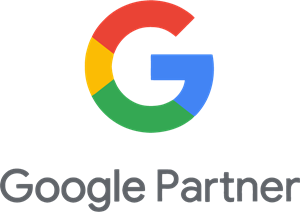OK. The brief may have been tricky to write, they are normally long on general aspirations and short on detail. Typically a brief will mention things like: dynamic look and feel, an excellent user experience, improved site search, a mobile-first approach, fast page-load, more calls-to-action etc.
That’s all fine but how do you ensure that the website will really deliver? Most clients realise that there needs to be a ‘discovery phase’ or ‘scoping stage’ but there is often very little idea of what this means in practice or what to expect.
This is made worse by the fact that few agencies will ‘dive in’ and undertake this work until they have been appointed and so clients often don’t really know how the project will be defined until they have already made a ‘leap of faith’ in choosing an agency.
Here are the 4 main stages to ensure a successful scoping process.
Everyone talks about taking a user-centred approach but what does that really mean? The answer to this is complicated because almost every site will have several distinct audiences. Therefore, the more work that can be put into defining them and understanding their goals, the better the outcome will be for the site.
Assuming that there is an existing website, a lot of information can be captured from its analytics. We also recommend gathering information by installing a heatmap on the site and performing some technical performance tests. The test scores are particularly useful in setting some clear measures of success for the new site. We also find that a brief survey (placed on the site or triggered from a link sent out to existing users) can deliver some very useful insights.
Ideally, when the site’s audiences have been established it is worth defining them further by creating Personas. Personas aim to create reliable and realistic representations of your key audience segments.
Effective Personas
- Represent a major user group for the website
- Express and focus on the major needs and expectations of the most important user groups
- Give a clear picture of how the users are likely to use the site
- Aid in uncovering universal features and functionality
- Describe real people with backgrounds, goals, and values
The results of the Persona creation, site analytics work, testing and surveys should be distilled into a series of draft diagrams, mapping out the key user journeys.
This initial research should now be tested. There is no substitute for gathering input from real users. We recommend conducting these through a series of workshop sessions.
We generally aim for the session/s to be conducted with groups of 6 - 12 individuals. Ideally these will be mixed groups, reflecting the key audiences. Workshops work well around a table but they can also be very effective when handled as with a shared screen, via Teams or Zoom.
We believe that the central element of these workshop sessions should be a series of wireframe options. These layouts indicate how the new site’s structure could work and it is an excellent way to gather feedback and test detailed ideas to optimise the user experience.
When we are clear as to the direction that the new site with will take, in terms of its information architecture and structure we prepare some early-stage design concepts. Our designers ‘compete’ with each other to creatively interpret the client’s corporate style. Normally we start by creating a homepage and one or two sample sub-pages.
It must be stressed that the designs do not need to be finalised at the end of the scoping stage but it is clearly useful if the design is beginning to take shape.
“Thank you for running the workshop today, the general feedback was very positive and the team appreciated the motivation and the energy in the room.”
"From all the research work and input from the workshops it should now be possible to begin specifying the recommended technologies. A particularly important area to consider is how the new site will interact with any third-party software solutions, the CRM for example.
It is always worth being wary of agencies that only offer one CMS (Content Management Solution) as they will naturally aim to scope all projects to fit their solution. We prefer to scope the solution and then consider which technology is best-placed to deliver it.
Often there are a couple of viable CMS options and we are always happy to demo these systems, to help ensure that the client is actively engaged in this important decision.
The scoping work usually involves the three initial steps mentioned and the main deliverable from the project scoping stage is the functional specification document.
Key elements included in functional specification:
- Recommendations for the Information Architecture
- Identifying and specifying the required functional elements, including any integration required with third-party systems
- The approach that will be taken to meet accessibility requirements
- Wireframes - All the key wireframes to map out the user experience
- The recommended CMS solution
- Production schedule: This is usually in the form of a Gantt Chart. It is the schedule for each element of the project to meet the required deadline, with clear milestones, linked to progress review meetings.
- Specifying the approach to testing and also the site’s accessibility standards
- The post-launch KPIs (Key Performance Indicators) to measure success
- Service level Agreements for: support, hosting and digital marketing (if required)
“Just a short note to thank you very much indeed for your presentation to the Management Board last night. It is great to be working on a project that will most definitely make a visible and tangible difference. Thanks for all your help and creativity.”
"To skimp on the scoping process, perhaps because of a sense of project urgency, is to ‘marry in haste and repent at leisure’. A project that has been properly scoped is much more likely to run smoothly and be delivered on time and on budget. Good luck!
If you have a project that you would like to discuss with us then we would love to hear from you. Click here to contact us. Thank you.
Case studies
How can we help?







